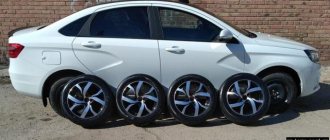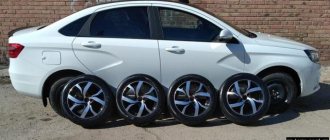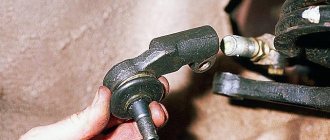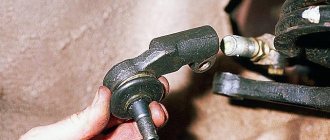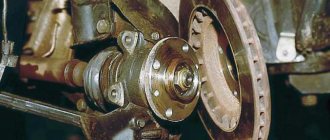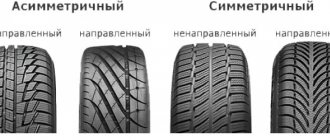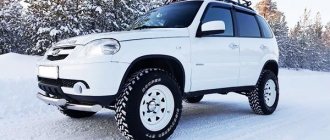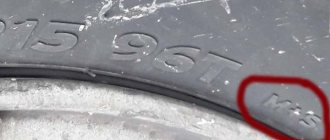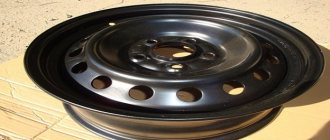Rubber provides traction between the wheels and the road and transfers engine power to the asphalt. It is important to choose the right kit for your car so that the operation of the car is as efficient as possible. Each set has such a parameter as the seasonality of the tires. Next, information will be presented about all-season tires, the features of their markings and the properties of this rubber.
In order to identify all-season tires by marking, such tires have an additional designation in the form of the letters M+S. The abbreviation Mud+Snow means that the kit provides reliable traction in difficult weather conditions. In addition, all-season tires are designated by the symbols 4S, AS or AW (4 Season, All Season or All Weather).
However, it should be understood that, in essence, all-season tires lose to winter tires at low temperatures and lag behind summer tires at high air temperatures. In fact, these tires are considered more of an off-season tire.
What is an all-season tire?
Various sets of seasonal tires are offered for the car, which differ in their characteristics and composition.
Winter tires are made of soft types of rubber, which will prevent the tire from becoming tanned. In addition, such products have a developed tread pattern and a high profile, which allows them to cling to slush and effectively drain water. The difference between summer tires is hard rubber. This tire tolerates high loads well and does not melt while driving, confidently clinging to the surface. The profile height is small, and the contact patch with the road is the most extensive. However, in low-temperature conditions it becomes dull and does not provide proper grip, which results in a long braking distance.
Finding out whether you have summer or winter tires is quite easy. Sets without any additional marks are considered summer. All-season tires are designated by the letters 4S, AS, M+S, and the Velcro or studded tires are marked with snowflake designs.
Markings on all-season tires. Summer and all-season tires, test
All-season tires are often compared to winter tires, and less often to summer tires. Current tests (such as ADAC or "AutoBild") show that all-season tires perform worse than highly rated seasonal tires, while good all-season tires perform better than the cheapest seasonal models. As a rule, all-season tires perform even worse in tests than good summer tires. This is confirmed by tests on dry surfaces in both the braking and driving categories (for example, in the "AutoBild" test of size 205/55 R16 from 2009). Summer tires benefit from their tread pattern and rubber compound. It happens that some year-round models cope well with tests on wet surfaces, especially when it comes to hydroplaning, for example, the Vredestein Quatrac 3 or Dunlop SP 4 All Seasons. While these tires are inferior to good summer tires, they can outperform many cheaper products (mostly the cheapest, lesser-known brands).
Parameters and characteristics of rubber
Each set has a concept of tire seasonality. Despite the fact that tires of a certain composition are labeled as all-season tires, such a set is demi-season tires. These all-season tires have a softer rubber compound. In the summer, the all-season tire will overheat and “float,” which will lead to premature wear.
In the case of ultra-low temperatures, tires will lose to their winter counterparts. Such kits work most effectively at near-zero levels, providing proper grip on cold asphalt, slush or rain. In such conditions, rubber can be used, but you should not ride on it all year round; you should wear specialized shoes for the winter or summer season.
Benefits of all-season tires
All-season tires should provide an acceptable level of performance throughout the year, especially in moderate driving conditions. When using year-round tires, we will always be prepared for the sudden onset of winter or its sudden relapse in the spring. Therefore, their main advantage is versatility. All-season models do not require a seasonal visit to a tire shop. Thanks to this, we save time and money - we only have to worry about seasonal wheel balancing.
Pros and cons of operation
Each kit has its pros and cons.
All-season tires are no exception. Advantages:
- allow you to save money by purchasing only one set of wheels;
- feel good at zero temperatures, on wet or snowy asphalt.
Flaws:
- significantly lose to profile tires, subject to seasonality. At high temperatures the tire “floats”, and when the thermometer table is lowered, it becomes tanned. In winter the car must be on winter tires, and in summer - on summer tires.
Differences between summer tires and winter tires
The temperature and speed conditions of tire operation determine the main quality - the hardness of the rubber. Winter tires are softer . This provides them with better traction in frosty weather. Therefore, they quickly wear out on hot asphalt. Solid summer tires that hold the road well in the heat, but in the cold they slide even on clean asphalt.
TOP 12 best summer tires for a car - Rating 2021
The tread pattern is also different . On winter tires it is cut into thin sipes, which improve grip on ice or snow. The pattern of summer tires is designed to quickly remove water from the contact patch and provide a high coefficient of adhesion at high speeds.
In addition to the varieties listed, there are all-season tires. They have average characteristics. In winter, such tires hold the road worse than winter ones, and in summer they wear out faster than summer ones. The longer braking distance and worse handling are compensated by the fact that you can drive an all-season vehicle at any time of the year.
Tire size
The tire size is also indicated on the sidewall of the tire. There is a European type of marking. For example, readings 205*35*R17 make it clear that the tire width is 205 mm, the profile height is 45, and the inner diameter is 17 inches. The letter r means that we are looking at shoes with radial cord weaving.
The American method is similar to the European one, only in front of the numbers there are additional letters that signal the “orientation” of the rubber (P – Passanger, LT – Light Track). There is another way to indicate the standard size, where the values are given in inches. For example, if there is a number 29*11*R18 on the side, its decoding will mean the following:
- 29 – outer diameter in inches;
- 11 – tire width;
- 18 – internal diameter.
How to distinguish winter tires from summer tires?
Tires are a bit like shoes - it's not for nothing that we wear a pair of boots for a walk in the woods in December, and another when we go to a seaside resort during the holidays. Each pair of shoes should perform different tasks and bring us real benefit and comfort. Just as it is easy to distinguish boots from sandals, it is also not difficult to distinguish between winter and summer tires. This also applies to the visual aspect, but, above all, it is reflected in the specific parameters of the tires, which are transmitted to the characteristics of the car, our comfort and safety.
Speed index
Another required parameter is the speed index. This is a letter designation that indicates that the car can move at a given speed for several hours. The closer the letter is to the end of the Latin alphabet, the higher this indicator. Now the most common are kits with the indexes S, T, U, HV or W, allowing speeds of 180-190-200-210-240 or 260 km/h, respectively.
Marking of all-season tires and its designation
To understand what this marking means, no special knowledge is needed. It is important to know their standard sizes and main characteristics, as well as take into account the nature of their further use.
Markings on tires The place where you can see the markings is on the side of the tires.
When choosing, you need to consider two types of notations:
- Data that helps to find out the basic characteristics of tires necessary for a set to be suitable for a specific car brand, taking into account the intended conditions of use.
- Those that talk about the possibility of use during summer and winter.
When selecting suitable models, the following must be taken into account:
- who is the manufacturer of this kit;
- determining the standard size of products offered for purchase;
- what speed index do these tires have?
- take into account the load index established for them;
- an indication of the time when this set of tires was produced;
- seasonality information.
Tires for high-speed cars
Please note!
The manufacturer's name is written on the side in large font. This is done in such a way that it is impossible not to notice. It makes sense to consider this characteristic as one of the most important. When purchasing tires from little-known brands, you should carefully study the information available about them and seek advice from experts on this matter.
Size information includes the following:
- tire width;
- profile height;
- indications of what type of construction the tire has;
- the inner diameter of the tire, also called the seat diameter.
This designation looks like this: 185/65 R15. Explanation:
- 185 indicates the width of the working part of the machine. This information is indicated in millimeters. In the case under consideration, it is said that its width is 185 mm.
- 65 indicates the percentage relationship between the profile height and the tire width. In this case we are talking about the following: 185 * 65% = 120.25 mm - profile height.
- The R code indicates the profile design. In the example given, it is radial. Here we are talking about how the cord is located in the tire. This place may also be marked D, which indicates a diagonal arrangement. However, this variety is becoming less and less common.
- The final part of the designation (15) is the diameter of the inner part of the tires. This value is measured in inches.
The speed index is intended to provide information about the maximum permissible speed of a vehicle using such a tire model.
If the specified limit is exceeded, there is no guarantee that the tires will cope with their intended purpose. It is important to note that tires from foreign manufacturers indicate this characteristic taking into account the quality of the road surface in their country. Where roads are of poorer quality, the speed limit will be lower. This designation consists of indicating a capital letter that corresponds to a certain speed limit.
You may be interested in Sava - original tires
Winter tires
Here are some examples of decryption:
- L indicates that the speed must not be exceeded 120 km/h;
- M corresponds to 130 km/h;
- W indicates 270 km/h;
- Z corresponds to 300 km/h.
Note!
If we are talking about racing cars, then they have an additional designation - ZR, which indicates that the tires can be used at speeds exceeding 240 km/h.
When choosing tires, you need to look at the weight load index. It takes into account the maximum permissible weight per tire. It should be taken into account that the load between the tires is unevenly distributed. The calculation is usually done according to the following rule:
- 20% is subtracted from the total weight of the car.
- The remainder is divided by 4.
- The resulting value must be compared with the specified limit.
This designation looks like a code consisting of two or three digits. Each combination corresponds to a certain weight limit. To read such code, you need to use a special table.
Attention!
It is important to consider that as the index under consideration increases, the tire frame becomes rougher, which in turn reduces traction.
Load index
Along with the speed category, tire manufacturers put down two more numbers - the maximum load index. This parameter means that the tire is capable of traveling under the specified weight on one wheel, subject to maximum pressure. The indicator is indicated in kilopascals closer to the inner radius.
The higher the indicator, the greater the load that the wheel can carry. The minimum value in the industry is 1 - 46.2 kg per wheel, and the maximum figure is 279 - 13.6 tons per cylinder.
Marking
Sometimes the marking of all-season tires can be supplemented with various icons. Among the additional symbols you can find the inscription “Retread”. The fact is that some kits need to be repaired and the compound is re-fused onto them and the tread is cut. Refurbished products carry this designation. Driving on such tires does not pose any danger, but the tire purchased by the driver will wear out a little earlier. Fortunately, the price is cheaper.
Some car tires and wheels do not fit together, having fundamental differences in design. So, if you are going to change the tires of your car yourself, it is worth remembering that the tube sets must be installed on the corresponding wheels with the designations LK, GK or RK. The symbols LB, GB or RB indicate combination with tubeless type kits (TubeLess).
Tire installation rules regulate the presence of color marks. If there is a yellow triangle icon on the sidewall, then this is the lightest part of the rubber. All you need to do is align it with the mark on the disc. The red dot indicates the hardest point and should also be aligned with the L mark on alloy wheels.
Characteristics of an all-season tire
As a rule, when examining the tread of all-season tires, doubts already appear, and a silent question arises: is this a summer tire or a winter one? This is a very correct doubt and the right question, since the main consumer characteristics of all-season tires will be inferior to winter tires (in winter conditions) and summer tires (in summer conditions).
Below we compare summer and all-season tires based on their main characteristics.
, in which .
All-season tire Summer tire
Dry grip
In this discipline, summer tires will undoubtedly win. Thus, the greater negative profile of all-season tires and the presence of sipes, which are so useful on snow, will hinder reliable performance on dry asphalt. And the higher the temperature, the larger the gap between these tires.
Mileage (tire life)
The rubber compound of all-season tires, weakened either by additional channels and sipes, or by a winter “formulation”, will wear out much more intensively. On hot days, the rubber will literally melt, losing precious millimeters of tread. Summer tires will win.
Preparing all-season tires for winter will affect the tread, which will have more edges for grip. These same edges will add additional voices to the overall tire noise. The tread of summer tires is calmer - which means they are quieter.
Rolling resistance (and therefore fuel consumption)
Summer tires will also outperform all-season tires here, since the tread pattern is more solid, and the rubber compound is better prepared to reduce heat losses during tire operation.
When it comes to wet grip, depending on the conditions, all-season tires may have a slight advantage or be on par with summer tires.
Selection for SUV or crossover
We told you how to distinguish winter tires from summer tires - by the snowflake icon. However, to choose shoes for a non-trivial car, this knowledge may not be enough. When purchasing wheels for a crossover, you should imagine where the car will spend most of its time. If in the city, then standard tires with the designation AW (All Weather or Aqua - improved drainage and increased resistance to aquaplaning) are a good choice.
If the car goes beyond the definition of an SUV and you are planning trips into nature, then it is better to give preference to sets with a developed tire tread, improved lugs and increased cross-country ability. Such kits are designated by the letters AT - All Terrain.
For real off-road vehicles, special tires like Bridgestone Dueler are used, which have proven themselves in combat conditions and have high load resistance and excellent grip. This set is more expensive than the standard one, but its price is justified by its excellent qualities.
Visual differences
Here's another way to distinguish winter tires from summer tires - this is the type of tire. On winter tires, the tread is deeper - in winter there is frequent precipitation, rain, and snow. Such a deep tread pattern makes traction much better. Often, wheels designed for winter also have studs, which make it easier to control in icy conditions.
Drivers also agree that winter tires may have a large number of sipes. On Scandinavian tires, as car enthusiasts note, you can notice more diamonds arranged in a checkerboard pattern.

